Project Speed is Network Rail’s programme to halve the time it takes to make things happen… and slash the costs. It coined the term ‘Minimum Viable Product’.
Two years in, one scheme has been completed to these principles: the Dartmoor Line between Exeter and Okehampton. It was delivered early and significantly under budget.
But during those two years, much has altered. Project Speed was not designed to deal with the rampant inflation that now threatens to undermine the viability of other enhancement schemes.
It was established before the Treasury turned the screw on railway finances, squeezing the opportunities for further projects. Before energy costs went through the roof. And before a long, hot summer of industrial action centred on the reform of working practices coupled with below-inflation pay rises.
Now economic recession is looming. This will further dampen passenger demand that has not recovered from the pandemic. It’s highly likely that some of the schemes destined for the Project Speed treatment will be trimmed from the list.
“Speed originally was about halving the time and curtailing the cost,” says Cara Murphy, client director for Great British Railways at consultants Atkins.
“Then it became halving the cost and curtailing the time. Now I think it’s halving the time and halving the cost!
“It’s going to be very difficult. The investment pipeline is uncertain. Speed needs to be employed in a more widespread way, and not simply used as a tool on a limited number of major enhancements.
“You can apply the principles to maintenance and renewals, but that is not being done at the moment. Network Rail knows it is the right thing to do, but not much of the organisation has got around to doing it yet.”
“The concept has not changed at all,” counters Christian Irwin, Network Rail’s Rail Investment Centre of Excellence director, and previously the person in charge of the Okehampton project.
“Halve the time and slash the budget. We must get the most out of every single pound we spend.
“There is a finite amount of funding available. For every pound less we can spend on investment, there is more money to be spent on the rail network, or to be spent elsewhere in the UK.
“We have to recognise that Government investment is going to become increasingly challenging. We need to become more affordable.
“Speed was about how to tackle inefficiency in projects. How to break down the way we do things - the processes and standards that aren’t relevant on some of our work - and change the way rail spending is focused.”
There were six trial projects. The list then expanded to 28.
“Not all of them are live now, because the spending review is likely to reduce the amount we spend,” concedes Irwin.
“Across those 16 live programmes, we have seen in excess of £3 billion knocked off the anticipated final cost of those projects. We are forecasting savings of over 633 months across the projects. That’s £3bn we are not asking from Government for enhancement.”
The total combined spend of those 16 projects is £11.6bn.
According to Project Speed’s promotional material, it will “empower all of us to be revolutionary in our thinking”. That sounds like a neat line of superficial management gobbledygook. Dig a little deeper, and it means challenging standards and creating efficiencies through procurement, governance, assurance and timetabling - much of the saving comes not from the materials put into the ground, but from the planning and administration beforehand.
The ‘experiment’ ended on March 31. It has, according to Network Rail, produced “a new toolset, skillset and mindset”. Now the plan is to extend this to all enhancement and renewal projects.
Case studies
The Dartmoor Line is the headline act - the first (and so far, only) example of the Government’s ‘Restoring your Railway’ or ‘reversing Beeching’ programmes, returning regular passenger services to the line after almost half a century.
It was completed two years ahead of schedule and way under budget. The anticipated price was £89 million. The final cost was £47m - a 51% saving. And passenger numbers are already 200% higher than predicted in the first year, despite opening during the pandemic.
“Dartmoor was our real test case,” says Irwin. “Delivering in seven months and 28 days from the day the funding was announced, to the day it opened.”
A boost to the East Coast Main Line power supply is less headline-friendly, but arguably more significant. ‘Static frequency converters’ are being used. In the past, pylons would have been built from a new power supply from the National Grid, with a cost estimate of £1m per mile of railway. The converters ‘plug in’ to existing cables, cleaning the local power supply to optimise it for electric trains. Cost saving: £500m.
Replacing the railway flyover at Bletchley is a third Project Speed effort, carrying the East West Rail line from Bicester. A ‘box’ structure feels more like placing the lines beneath in a short tunnel. Some 70% of the box and flyover components were manufactured in advance and assembled onsite. “Like a model kit or set of Duplo bricks,” says Network Rail.
It also meant the railway did not have to be closed during the flyover construction, as the box provides a safe physical barrier. This reduced the cost by £70m, reduced the workforce by 60%, and shaved six months off the timescale of the project. And it’s claimed the new structure will last 120 years (the old one only managed 60 years).
Flatpack bridges are a third cheaper than other railway station pedestrian bridges. Think of it as an Ikea design, able to be customised with different components, but conforming to a common formula.
The components of the bridge are manufactured offsite. Because it is an off-the-shelf design, project time can be trimmed by 75% compared with Network Rail’s previous individually specified footbridges.
The lifts have a dual system to minimise downtime and disruption. The result is 34% cheaper than before, taking only one-third of the previous time on site, and more than halving the carbon footprint.
Lineside buildings: we’ve all seen the state of some of Network Rail’s 18,000 small buildings. The company reckons half of them are in desperate need of repair.
There’s a trial to ‘wrap’ rather than replace the buildings - essentially, a modular kit to assemble around the outside of the existing building. Network Rail says it is like armour, making equipment housing fireproof, moistureproof and better insulated. It also reduces energy consumption.
A building can be wrapped by three or four people in two days at a cost of £150,000, representing a claimed 92% efficiency saving. Critically, it can be done without closing the railway. NR reckons each unit will pay for itself in four years through energy savings and lower maintenance.
SPEED means what?!
SPEED stands for Swift, Pragmatic and Efficient Enhancement Delivery. Yes, really - someone actually came up with that. The acronym was quietly shelved. Now it is just a name.
“They seem to have slipped back into the old ways of doing things,” says Cara Murphy from Atkins.
“There are some projects in flight at the moment. That doesn’t necessarily mean they have all the Speed processes behind them. They have created programmes with truncated timescales and improved efficiencies. But they are re-implementing some of the governance processes that were specifically taken out.
“For it to work, culture has to change at all levels - not just at Network Rail, but across all the contractors and the supply chain, and at the Department for Transport. Otherwise, the ‘this is the way we’ve always done it’ attitude will creep back in.”
“Cara sums it up well there,” says Railway Industry Association Technical Director David Clarke.
“Where Speed has been successful is in the relationship between Network Rail and the Department for Transport. It has accelerated the decision-making process between them.
“A lot of cost escalation came on projects where decisions were not made quickly. Or they were made, but then changed much later on. Or, worse, the taxi meter was left running without any decisions being made.
“Often, jobs are too tightly defined by the time the supplier gets involved. If you want to know how to build something, ask a builder! That’s why we keep banging on about early contractor engagement.”
Some 80% of Network Rail’s spend on enhancement is through contractors. Christian Irwin admits that in the past, they have been excluded from the decision-making process. He says they have now been brought in and sit at the table.
“A lot of the cost is in the decision making,” he agrees. “Our traditional GRIP process led us to develop many options. And those options took a lot of time.
“Instead, we need to get a Minimum Viable Product. We need to think of the outcome we need to achieve.
“Using the example of the Dartmoor Line, at the conception of that project we got together with the local community and the local authorities and decided the sole ambition was to restore regular seven-day passenger services between Okehampton and Exeter.
“That was the required outcome. Not how much track had to be laid, how many signals would be needed, how many bridges would need re-facing. That allowed us to design a specification to achieve the Minimum Viable Product at the lowest possible cost.
“In every project, we must do that. We have to get a mindset of intolerance of waste.
“Mindset is the biggest driver. Cultural change. Whatever you want to call it. We have to get every single person - engineer, sponsor, manager, commercial and procurement - thinking about how to be bold, curious and innovative about driving efficiency.
“We need to provide the toolset to do this. And the skillset. Our people have been used to a way of working for the last ten, 15, 20 years. We have to train them, modify their competencies.”
Murphy adds: “You can apply the principles to maintenance and renewals, but that is not being done at the moment. The existing approach to maintenance doesn’t seem to have much science applied to it. And is the subject of industrial action.”
Murphy is a straight-talking Australian - formerly a management consultant in the rail sector there, but now with a decade of experience in the UK.
“Speed is happening in pockets, where you’ve got the right management to focus on it,” she says.
“Speed needs to have time spent on doing it right. It needs the right people in the room. Otherwise, it is just another tick-box exercise. Bringing all the people together to get acceptance at the start is not really happening, which means it’s too easy to slip back into standard project delivery.
“I’m a wholehearted supporter of Project Speed, but I am pessimistic that it will be implemented consistently and concisely, delivering the benefits that it is supposed to achieve.
“I think that is because of the pressures on Network Rail: cost-cutting via having a smaller workforce, rather than by having greater efficiency, and not having the time to think about the trade-off between those two.”
“Speed has gone through two phases and is into a third,” says RIA’s David Clarke.
“First, there was lots of engagement in the big new thing. There were exemplar projects. If you were on Okehampton or the Northumberland Line, you thought it was great.
“Then it went into a phase where suppliers saw nothing. Phase two was something of a disappointment. If you weren’t on the exemplars, the whole thing was a mystery to you.
“Now I think we are entering a third phase in which Network Rail has recognised there is a problem, and it is re-engaging with people on the outside.
“We are never short of an acronym or an initiative. We even have ‘agile clients’ now! In the past, the process triumphed over the outcome. You got a pat on the back for following the process, and didn’t get one for delivering the biggest bang for the buck. So, repositioning the mindset is a really important thing.”
“The commitment is to roll this out to enhancements and renewals,” says Christian Irwin.
“We treat maintenance in a different way. But renewals - ripping out track, replacing signalling, taking a bridge down and replacing it - can absolutely work this way.”
Inflation
Project Speed predates 2022’s double-digit inflation, the rocketing price of fuel, the war in Ukraine and this summer’s industrial action. Does that make it more relevant, or less?
“One of the key drivers of that industrial action is the affordability of the network,” says Irwin.
“If we can apply Speed to deliver projects quicker and cheaper, the cost of the railway should come down. We have to be more affordable.
“Inflation is probably our biggest risk. We buy a phenomenal amount of material, and the material prices are rising significantly. We have to deploy Speed through everything, because otherwise good plans will become unaffordable, and we can offset some of the challenges of inflation.
“We may see no success in the current climate.
“We talked about this more than anything else over the last quarter with the Department for Transport. How do we make decisions, when the cost of delivering things is increasing rapidly and the budget is not?
“Project Speed is all about being curious and willing to try something different. The railway hasn’t always been good at that.”
Will Project Speed survive?
“I think it will survive,” says Cara Murphy. “But I don’t think it will be called Project Speed. It’s just a framework to get people to think about doing things differently.
“It costs far too much money to operate the railway the way we do currently. We can no longer afford - or justify politically - to continually go several million pounds over budget and deliver two or three years late.
“But I hope the focus on ‘Minimum Viable Product’ will come through. If you end up with a focus more on getting things done, and less on the tick-box governance, with the finger-pointing of accountability and blame, then you’ll more or less get Speed.”
Clarke agrees: “It has to survive. It needs to become the everyday process, and nothing special. Project Speed is about addressing time-wasting inefficiency that we have allowed to grow up, that should never have been tolerated. If you only have a finite amount of money to spend, and it’s a smaller amount than before, then you have to apply this approach.”
“We won’t hold onto the branding forever,” says Christian Irwin.
“But this is what we are calling our transformation programme. It is about reducing the complexity of what we do. We are not going to reduce the time or the cost by 50% on every scheme. Delivering at pace is really important, but not if delivering at pace means delivering at higher cost. We still have inefficiencies in the way we work, but we are definitely going in the right direction.
“Let’s say that in two years’ time, we are not talking about Project Speed any more, but let’s say we are delivering phenomenal efficiency. We are already hitting a 20% efficiency target across our investment portfolio.”
Murphy concludes: “The railway was already losing credibility. That’s why Project Speed was needed. It is needed even more now. But do politicians care at the moment? Probably not. They have bigger things on their mind than rail efficiency.
“We are lucky to have politicians who supported the railway, even if they haven’t always considered them to be essential infrastructure. I don’t think the next generation is even going to consider trains as socially essential, and they won’t want to spend money on railways. That’s what Project Speed is really up against.” ■

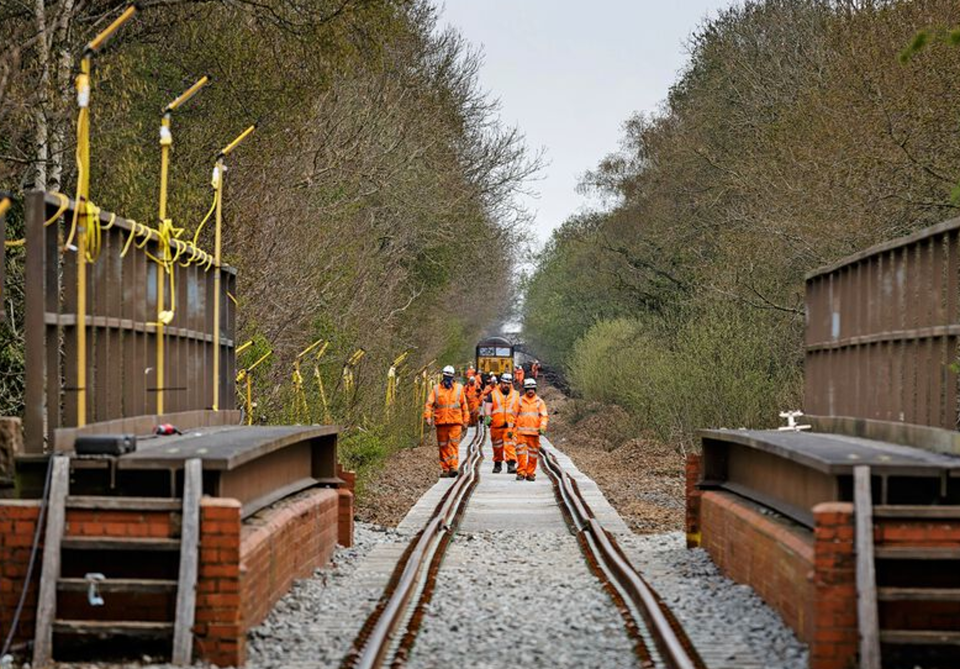
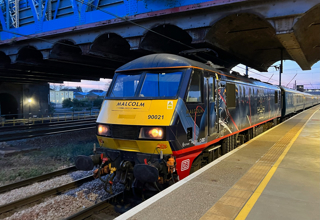
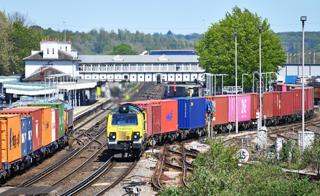
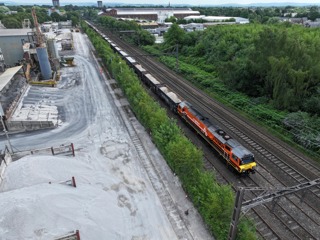
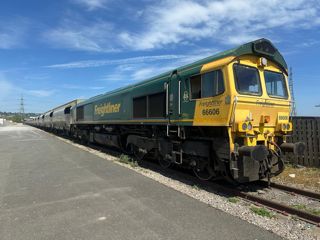
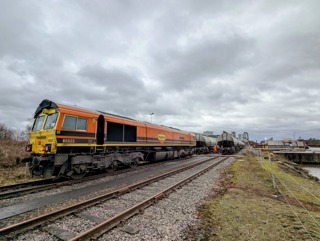










Login to comment
Comments
No comments have been made yet.